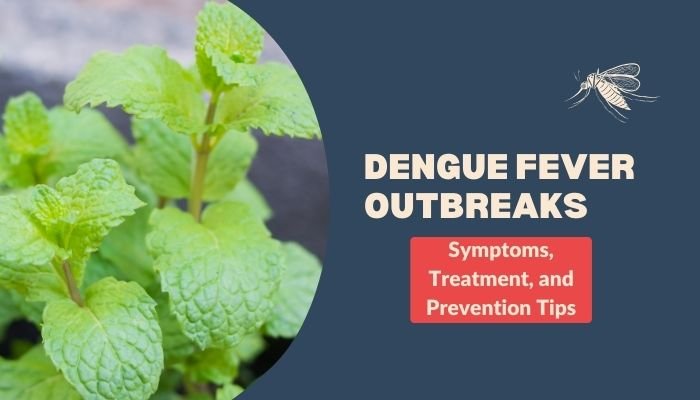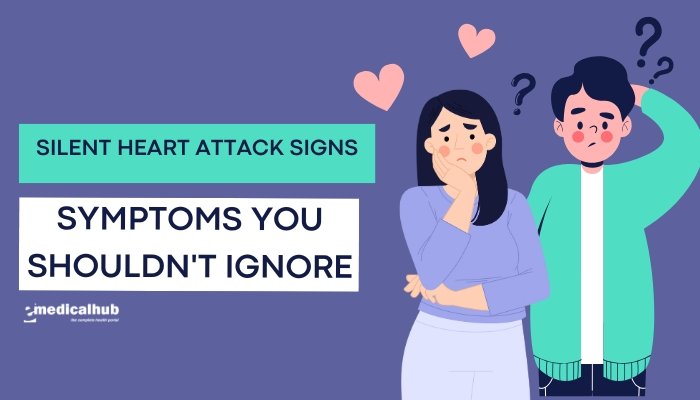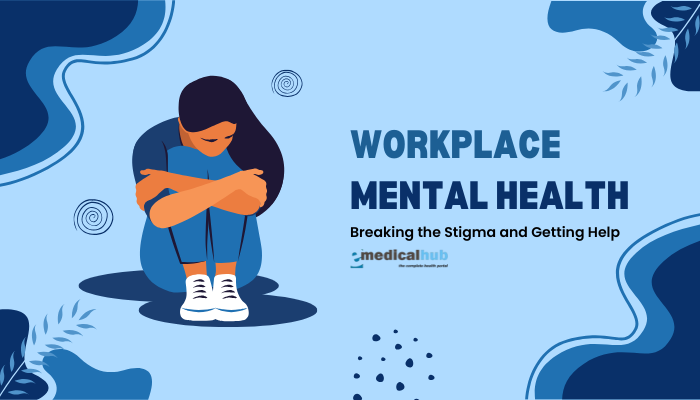Introduction
Dengue fever is a mosquito-borne viral infection primarily found in tropical and subtropical regions of the world. Caused by one of four related dengue viruses, it is transmitted to humans through the bite of an infected Aedes mosquito—predominantly Aedes aegypti, but also Aedes albopictus in some areas.
When outbreaks occur, they can place significant pressure on healthcare systems, leading to surges in severe cases and, occasionally, an uptick in fatalities if left unmanaged.
In recent decades, dengue outbreaks have grown more frequent, fueled by factors such as urbanization, global warming, increased travel, and poor water and sanitation practices in certain communities.
This article reviews the fundamental aspects of dengue fever, including typical symptoms, available treatment approaches, and essential measures individuals and communities can take to prevent and control outbreaks. By understanding the disease and learning key strategies, you can reduce personal risk and help curb the spread of dengue in your area.
What Is Dengue Fever?
Overview of the Dengue Virus
- Virus Family: Dengue belongs to the Flaviviridae family, the same group as Zika and yellow fever.
- Serotypes: Four main serotypes (DENV-1, DENV-2, DENV-3, DENV-4). Infection with one serotype confers lifelong immunity to that specific variant but only partial or temporary protection against others, which is why multiple infections over a lifetime are possible.
- Geographical Distribution: Southeast Asia, the Western Pacific, the Americas, Africa, and parts of the Eastern Mediterranean all face recurrent dengue activity.
Transmission Cycle
- Aedes Mosquitoes: Daytime biters with peak feeding times early in the morning and late afternoon. They breed in standing water found in containers around homes, like buckets, flower pots, or discarded tires.
- Human-to-Mosquito: When a mosquito feeds on the blood of a dengue-infected person, it can transmit the virus to the next individuals it bites.
- Incubation Period: Typically ranges from 4 to 10 days after a bite from an infected mosquito before symptoms appear.
Why Outbreaks Occur
- Climate: Warm, humid conditions accelerate mosquito breeding and virus replication.
- Population Movement: Travel can introduce new virus strains into susceptible areas, fueling outbreaks.
- Urban Crowding: Dense living conditions offer more breeding sites (standing water) and closer contact between infected individuals and mosquitoes.
Key Point: Dengue thrives where Aedes mosquitoes can find standing water and has a cyclical nature, with some areas experiencing seasonal surges aligned with rainy periods.
Recognizing Dengue Symptoms
Primary Signs of Dengue Fever
- High Fever: Often abrupt onset, typically 40°C (104°F), lasting 2–7 days.
- Severe Headache: Especially behind the eyes (retro-orbital pain).
- Muscle and Joint Pains: So intense that dengue is sometimes called “breakbone fever.”
- Rash: A red, patchy rash may appear 2–5 days after the fever begins.
- Nausea and Vomiting: Some experience mild GI symptoms.
Warning Symptoms of Severe Dengue
- Intense Abdominal Pain: Persistent or worsening.
- Persistent Vomiting: Could indicate complications.
- Bleeding: From nose, gums, or easy bruising can signal hemorrhagic progression.
- Fatigue and Restlessness: May reflect fluid depletion or shock.
- Rapid Breathing: Potential sign of fluid shifts or shock.
Dengue Hemorrhagic Fever and Dengue Shock Syndrome
- Dengue Hemorrhagic Fever (DHF): Plasma leakage, severe bleeding, or low platelets lead to hemorrhagic manifestations (bleeding under the skin or from orifices).
- Dengue Shock Syndrome (DSS): Profound hypotension due to severe plasma leakage can cause shock, organ failure, and can be fatal if untreated.
Crucial: Recognizing these severe signs early can save lives. Men, women, and children of all ages can be affected differently, but vigilance is key.
Diagnosis and When to Seek Medical Attention
Diagnostic Methods
- Clinical Examination: Fever history, physical findings (rash, hemorrhagic tendencies) guide initial suspicion.
- Laboratory Tests:
- Serology (IgM/IgG): Antibody tests typically positive after day 4–5 of illness.
- NS1 Antigen: Can detect the virus in the bloodstream during early infection (first few days).
- PCR (Polymerase Chain Reaction): Identifies viral RNA, especially in the initial phase.
- Complete Blood Count: Platelet drop, hemoconcentration (rising hematocrit) suggests severe dengue risk.
When to Seek Urgent Help
- High Fever with Bleeding: Indicated by gum/nose bleeds or unexplained bruises.
- Severe Abdominal Pain: Could highlight internal bleeding or impending shock.
- Persistent Vomiting: Risk of dehydration or inability to keep fluids down.
- Altered Mental Status: Lethargy, confusion, restlessness.
- Breathing Difficulties: If fluid accumulates in chest or shock affects oxygenation.
Risk Groups for Complications
- Young Children: May have fewer or atypical early symptoms, but can quickly deteriorate.
- Older Adults: Comorbidities (e.g., diabetes, hypertension) can worsen outcomes.
- People with Chronic Illnesses: Weakened immunity or multi-organ issues heighten severe dengue possibility.
Treatment Approaches
Supportive Care Is the Mainstay
- Hydration: Adequate fluid intake (oral rehydration solutions or IV fluids) crucial to prevent hemoconcentration and shock.
- Fever Management: Paracetamol/acetaminophen is recommended over NSAIDs (like ibuprofen, aspirin) which could exacerbate bleeding.
- Monitoring: Regular checks of hematocrit, platelet count, and vital signs help catch complications early.
Management of Severe Dengue
- Hospitalization: For close observation, intravenous fluid therapy, and prompt intervention if shock or hemorrhage develop.
- Platelet or Plasma Transfusions: In cases of significant bleeding or extremely low platelets.
- Intensive Care: If organ function is threatened or severe complications arise, advanced support might be required.
Emerging Therapies and Vaccines
- No Specific Antiviral: Currently, dengue is mainly tackled via supportive measures. Several antiviral drugs remain in research phases.
- Vaccines: A few dengue vaccines are in development or authorized in specific countries (e.g., Dengvaxia, Qdenga). Vaccination strategy can be complicated by pre-existing immunity concerns (risk of severe disease if infected with a different serotype).
- Future Prospects: Additional vaccine candidates targeting multiple serotypes, advanced antiviral molecules, or prophylactic antibodies are under study.
Preventing Dengue: Individual and Community Measures Mosquito Control Basics
- Eliminate Standing Water: Drain or discard containers that hold water (tires, pots, buckets). Even small accumulations can breed Aedes mosquitoes.
- Use Screens and Nets: Keep doors/windows closed or ensure mosquito netting.
- Insect Repellent: DEET, picaridin, or IR3535-based repellents deter Aedes. Reapply as indicated.
- Wear Protective Clothing: Light-colored, long-sleeved shirts and trousers especially in high-risk areas.
- Larvicides: In water tanks or large containers, using larvicidal agents helps hamper mosquito breeding.
During Outbreaks
- Community Cleanup: Organize neighborhood efforts to remove or treat stagnant water sources.
- Fogging: Local health authorities might carry out insecticidal spraying, though the effect is temporary.
- Public Awareness: Education campaigns on personal protection and symptom recognition so infected individuals seek care promptly.
Travel Precautions
- Destination Research: Check local dengue rates and recommended preventative measures.
- Pack Repellents: Also bring permethrin-treated clothing if going to a high-incidence zone.
- Stay Vigilant: If traveling during rainy season or to rural areas, higher mosquito activity is expected.
Addressing Myths and Stigma
“Dengue Is Only in Rural Areas”
- Reality: Aedes mosquitoes thrive in urban environments as well, given container breeding. City outbreaks can be intense.
“Only Kids and Elderly Are Affected”
- Reality: Any age group can get dengue. Though complications are more frequent in extremes of age or pre-existing health conditions, healthy adults can also face serious outcomes.
“Once You’ve Had It, You’re Immune to All Dengue”
- Reality: Immunity is serotype-specific. A second infection with a different strain may raise the risk of severe dengue.
“Spraying Insecticide Alone Will Solve It”
- Reality: Fogging kills adult mosquitoes temporarily, but sustainable prevention requires source reduction, personal protection, and community mobilization.
Recovery and Post-Dengue Care
Convalescent Phase
- Gradual Improvement: After the febrile stage, fatigue can linger. Balanced nutrition and gentle rehydration aid in rebuilding strength.
- Watch for Late Symptoms: Some may have prolonged weakness, hair shedding, or mild mental “fog” for weeks.
Return to Normal Activities
- Exercise Caution: Reintroduce physical exertion gradually, as the body might still be fragile post-fever.
- Check Blood Counts: If available, monitoring platelet normalization.
- Follow-Up: If severe dengue was experienced, a follow-up with a doctor to ensure no hidden complication or organ effect remains.
Emotional and Psychological Impact
- Anxiety over Recurrence: Those who experienced severe pain or hospitalization might fear re-infection.
- Health Education: Understanding prevention strategies can reduce stress and empower ongoing vigilance.
Global Context and Challenges
Climate Change Influence
- Rising Temperatures: Warmer conditions expand the range and breeding seasons of Aedes mosquitoes, turning previously low-risk areas into outbreak-prone zones.
- Extreme Weather: Floods or heavy rains can create more standing water.
Urbanization and Travel
- Population Density: Inadequate waste disposal or water storage in crowded cities fosters easy mosquito breeding.
- Cross-Border Transmission: Increased mobility can quickly spread new virus serotypes to non-endemic regions.
Public Health Infrastructure
- Limited Resources: Many developing nations lack robust vector control or healthcare resources for large outbreaks.
- Surveillance Gaps: Underreporting or misdiagnosis means official data might underestimate true incidence.
Personal and Community Readiness
Individual Preparedness
- Create a Mosquito-Free Home: Weekly check containers, roof gutters, or anything that can hold water.
- Watch Travel Advisories: If traveling, follow recommended prophylactic measures (clothing, repellent).
- Know Your Body: If symptomatic (persistent fever, body aches, rash), consult a doctor quickly rather than self-treating with unknown meds.
Community Engagement
- Block or Neighborhood Committees: Promote cleanup drives and coordinate with local health offices for larvicide distribution.
- Local Healthcare Partnerships: Schools, workplaces, religious institutions can host awareness workshops or gather resources.
- Advocacy: Demand better sanitation services, drainage solutions, or waste management from authorities.
Conclusion
Dengue fever is an ever-present threat in many global regions, with outbreaks arising from a blend of climatic conditions, urban expansion, and insufficient vector control. Yet personal and community actions—ranging from simple container checks to mass prevention campaigns—can drastically reduce the spread of Aedes mosquitoes.
Recognizing the earliest signs, seeking quick medical intervention, and adhering to doctor-recommended supportive treatments remain the cornerstones of successful recovery and preventing complications.
Given the cyclical nature of dengue and the possibility of multiple infections by various serotypes, vigilance is necessary not just during peak season but year-round in endemic areas. Through combined efforts—individual precautions, robust public health policies, and ongoing research into improved vaccines or therapies—dengue’s impact can be minimized. Ultimately, staying informed, practicing prevention, and swiftly responding to symptoms can protect both individuals and entire communities from the burdens of dengue outbreaks.
Frequently Asked Questions (FAQ)
- Can I get dengue more than once?
- Yes. Immunity is strain-specific. Infection by one serotype leaves you vulnerable to other serotypes, sometimes with a higher risk of severe disease.
- Is dengue contagious between people?
- No. It spreads through infected mosquito bites, not person-to-person contact.
- What pain reliever is safe if I suspect dengue?
- Acetaminophen (paracetamol) is recommended. Avoid aspirin or ibuprofen as they can worsen bleeding risks.
- Should I be worried about traveling to dengue-endemic areas?
- Take protective measures: use repellents, wear long-sleeve clothing, stay in accommodations with screens or netting. If you develop fever abroad or after returning, see a doctor.
- Can children or pregnant women take the same treatments as adults?
- Treatment principles are similar, but dosage and monitoring differ. Immediate pediatric or obstetric consultation is advised for risk groups.
- If I had a mild case before, am I immune?
- You gain lifelong immunity to that specific serotype, but remain susceptible to the other three. This partial immunity might raise severe dengue risk on re-infection.
- How effective are vaccines?
- Dengue vaccines exist, but their use is complex, typically recommended for individuals with previous dengue exposure in certain age groups. Consult local guidelines.
References
- World Health Organization. Dengue and severe dengue: Key facts. 2023.
- Centers for Disease Control and Prevention (CDC). Dengue: Epidemiology and clinical symptoms. 2022.
- Bhatt S, Gething PW, Brady OJ, et al. The global distribution and burden of dengue. Nature. 2013;496(7446):504-507.
- Guzman MG, Harris E. Dengue. Lancet. 2015;385(9966):453-465.
- Halstead SB. Pathogenesis of dengue: dawn of a new era. F1000Res. 2015;4:1353.
- Wilder-Smith A, Ooi EE, Horstick O, Wills B. Dengue. Lancet. 2019;393(10169):350-363.
- World Mosquito Program. Aedes aegypti and Aedes albopictus: The main vectors of dengue. 2021.
- Sridhar S, Luedtke A, Langevin E, et al. Effect of dengue serostatus on dengue vaccine safety and efficacy. N Engl J Med. 2018;379(4):327-340.
- Shepard DS, Undurraga EA, Halasa YA. Economic and disease burden of dengue in Southeast Asia. PLoS Negl Trop Dis. 2013;7(2):e2055.
- WHO. Global strategy for dengue prevention and control, 2021-2030. 2022.
- Salles TS, da Encarnação Sá-Guimarães T, et al. History, epidemiology and diagnostics of dengue in the American and Brazilian contexts: a review. Parasit Vectors. 2018;11(1):264.
- Barniol J, Gaczkowski R, et al. Usefulness and applicability of the revised dengue case classification by WHO. Am J Trop Med Hyg. 2011;84(6):224-228.
- Hennessey M, Fischer M, Staples JE. Zika virus spreads to new areas – region of the Americas, 2015. MMWR Morb Mortal Wkly Rep. 2016;65(3):55-58.
- Martina BE, Koraka P, Osterhaus AD. Dengue virus pathogenesis: an integrated view. Clin Microbiol Rev. 2009;22(4):564-581.




